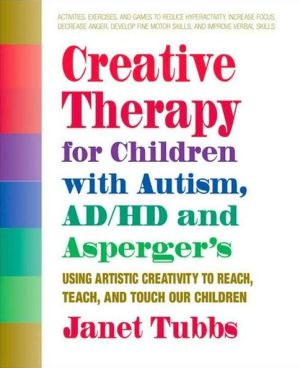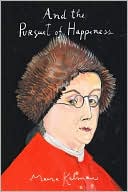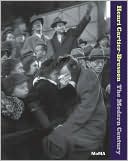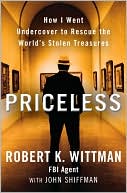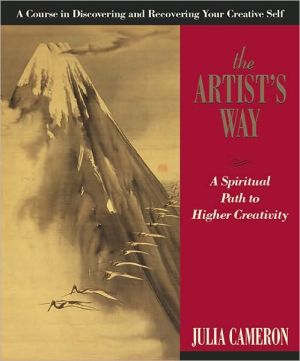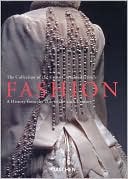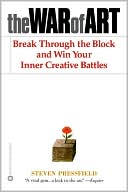Creative Therapy for Children with Autism,ADD, and Asperger's
Over thirty years ago, Janet Tubbs began using art, music, and movement to reach children with low self-esteem and behavioral problems. Believing that unconventional children required unconventional therapies, she then applied her program to children with autism, ADD/ADHD, and Asperger’s syndrome. Her innovative methods not only worked, but actually defied the experts. In this book, Tubbs has put together a powerful tool to help parents, therapists, and teachers work with their children.\...
Search in google:
It is no easy task to find a teaching technique that can truly change the course of a child with special needs. Thirty years ago, when Janet Tubbs began working with children who had low self-esteem and behavioral problems, she developed a successful program using art, music, and movement. Believing that unconventional children required unconventional therapies, she then took her program one step further-she applied it to children who had autism, ADD/ADHD, and Asperger's Syndrome. Her innovative methods and strategies not only worked, but they actually defied the experts. In this new book, Janet Tubbs has put together a powerful teaching tool to help parents, therapists, and teachers work with their children.The book is divided into two parts. Part One provides an overview of Autism Spectrum Disorders and introduces and explains Janet's novel approach to teaching. Her goal is to balance the child's body, mind, and spirit through proven techniques. Part Two provides a wide variety of exercises, activities, and games that are both fun and effective. Each is designed to reduce hyperactivity, increase and prolong focus, decrease anger, develop fine motor skills, or improve social and verbal skills. All are part of a program created to help these children relate to their environment without fear, anxiety, or discomfort.A child may appear stubborn and difficult, but that doesn't mean that the child isn't intelligent, curious, or creative. With the right treatment, such a child can be reached, taught, and set on the road to improvement. The lessons provided in this book may be just what you and your child have been waiting for.
\ Creative Therapy for Children with Autism, ADD, and Asperger's\ \ Using Artistic Creativity to Reach, Teach, and Touch our Children \ \ \ \ By Janet Tubbs \ Square One Publishers \ Copyright © 2008 \ \ Janet Tubbs\ All right reserved.\ \ \ ISBN: 978-0-7570-0300-4 \ \ \ \ \ Chapter One Unlocking Your Child's Hidden World \ Autism, a serious neurological disorder, was first identified over fifty years ago. For the first few decades, a relatively small number of physicians knew of it. For too long the clinical treatment of children with neurological disorders was off-limits to parents, who were given scant information about what actually had taken place behind closed doors. It was for the professional to know what was being done for-or to-the child, and parents were patronizingly believed to be unable to comprehend such advanced thinking. This book changes that outmoded practice by providing you, the parent, with tools and techniques necessary to work with your child in your home.\ Today we can learn about autism, Attention Deficit Disorder (ADD) and Attention Deficit Hyperactivity Disorder (ADHD), and Asperger's Syndrome (three common disorders on the Autism Spectrum) from Internet message boards, chat rooms, newsletters, support groups, and books. Parents are educating themselves about their child's disorder and therapies that are available to them. However, few know that they can implement most methods in their own home once they learn which are the most effective for their son or daughter and how to use them.\ There are methods of reaching children on the Autism Spectrum, and in this chapter, we will explore the three elements that make up your child's world: body, mind, and spirit. If just one of those elements is out of balance with the other two, disorder may prevent the assimilation of the whole child. You will learn how to take a proactive role in your child's improvement by recognizing that you have the right and responsibility to take on a major part of his therapy. For the most effective results, you will want a therapy program designed to combine the creative arts and the healing arts. Creative arts are designated in this book as art, energetic drawing, music, rhythmic massage, sculpture, puppetry, and handwork, e.g. knitting. (Initially, it was believed that music was the only form of effective therapy available.) Healing arts may include physical and psychological testing, nutritional consultation, and medical treatment. These will all be discussed in subsequent chapters.\ By using a combination of methods as you work with your child, you will see significant changes including improvement in fine motor, verbal, and social skills. In this chapter you will learn how children with ADD, autism, and Asperger's Syndrome are different from their peers. You will then have another key to their hidden world, which will help you to help them function on all levels: physical, emotional, mental, and spiritual.\ Parents who participate in their child's therapy play an enormous part in his growth and development. Everyone who participates in at-home therapy will have a sense of contribution, achievement, and excitement as results are seen. It is a big step for you to assume a large part of your child's treatment, one that may be intimidating at first. You will need strength, time, presence of mind, and courage of heart to accept that responsibility, but the rewards will far outweigh the time and effort you are investing in your child's growth.\ As you continue reading and exploring unfamiliar territory, you will become more confident and at peace with yourself and your child. Although improvement may seem glacially slow, it helps to keep in mind that all changes are not immediately visible. Also, your child has set patterns and he may resist change. Children with autism typically like routine. Your child may signal his resistance by crying or ignoring all efforts to communicate. Be patient. As you persist in learning about this disorder, you will realize that your child is one of many who are autistic, a fact that is reassuring to all family members.\ Adults often do not like change, either, so adapting to a holistic approach and new ideas about the various arts may be foreign to you and, at first, seem an insurmountable challenge. However, you will soon understand and become more familiar with what will be a new and exciting approach to reaching your child and helping him develop to his fullest potential.\ HOW CAN YOU HELP YOUR CHILD?\ If you are like most parents, you probably have asked, "Why did this happen to my child?" It is a first response for most people. After the shock of a diagnosis wears off, the next question should be-and remain-"How can I help my child?" It may take a while to find the right combination of psychologist, pediatrician, and/or therapist you feel is absolutely right for your child and his particular disorder. If at any time, for any reason, you feel uncomfortable, you have the right to see someone else. It is your feeling nature, your sensitivity or intuition that is guiding you, so trust it, keep looking, and you will find a perfect match.\ You can play a big part in the overall improvement in your child by working with him at home every day. Make it a game instead of a chore. Be a child again and get down to his level, on the floor and on your stomach as you paint or color. Don't tower over him like an ogre, telling him what to do. Instead be with him and have fun. It's much easier for him to look at you when you are at eye level than if you are several feet above him.\ Siblings, grandparents, uncles and aunts, and other family members can all participate in a child's improvement by painting, playing memory games, dancing, massaging, and talking with him. The goal is to keep him constantly stimulated mentally, physically, emotionally, and spiritually. A child needs continual activity that alternates between passive and active times. That is, cuddling while reading a story and then coloring, or alternating massage with kicking a ball. It is important to change his perception of the environment by moving from the dining room table to the floor to standing at an easel and then to a small child's table. In each setting his eyes and limbs are using different muscles as he observes his surroundings with a new perspective. When a child is kept involved, he is unable to retreat to his inner world. His time spent in activities begins to increase and he spends less time within and isolated.\ It is vital to your child's improvement that you talk all the time with him as you work together. Talk about anything. Be enthusiastic and descriptive about things you have done and places you have been. Engage him and ask questions. He may not answer verbally but you will have triggered an internal response. Don't hesitate to talk to your child if he seems inattentive or uninterested, because he is listening to and hearing everything that is said, which can stimulate a desire to emulate you.\ Engage your child in activities that address his mind, his body, and his spirit. This means physical exercise, even if it's moving slightly to music or going for a walk because his muscles need movement. Stimulate him mentally by talking to him and asking questions. Surround him with the spiritual qualities of truth, beauty, and goodness. This is done in many ways by being a role model. Your child will absorb your morals, ethics, and love of the arts without lessons or lectures, and these attributes will become second nature. The importance of various art forms and suggestions for creative exercises will be discussed in detail later in the book. The methods described in this book will help your child to control what is within his power to control and to strengthen his areas of weakness.\ Fill your home with color, music, and soft words; all of these are necessary to your child's feeling nature or sensitivity. Combined with necessary physical care and remedial therapies, a home free of arguments and yelling creates the most positive environment for the blossoming young child. By taking an industrious role and working with him as often as possible, each day you will be keeping his three-fold nature active. You will be helping him to grow safely into a healthy life.\ Working parents obviously can't spend all day working with their child. The next best thing is to tell caregivers and therapists the procedures you would like to have implemented while in your home. In a clinical setting, therapists may be willing to include some of these methods in their sessions.\ You can take an assertive role by eliminating electronic gadgets and toys that do all of your kids' thinking for them. Reduce or eliminate television and encourage your children to rely on their creativity and interaction with siblings and peers for entertainment. As parents, you will have to rely on your own ingenuity and imagination to spur the interest of your child. This can be daunting at first, but you will soon find that you are having fun while helping your child to improve his skills.\ WHAT IS THE AUTISM SPECTRUM?\ The Autism Spectrum is the term for a range of neurological disorders, classified from mild to severe, from Attention Deficit Disorder (ADD) to Asperger's Syndrome to what is known as "classic autism." Think of the Spectrum as a straight line with a dot at each end and one in the middle. Although along the bar there are other, less common disorders, this book will focus on these three increasingly prevalent ones. The dot at the left end is ADD, the mildest form of neurological disorder in the Spectrum. At the far right is classic autism, the most involved or severe form of these disorders. In the middle of this hypothetical line is a dot for Asperger's Syndrome, which has some characteristics of ADD and some of autism but does fit properly into either category.\ Children with ADD are easily distracted and have trouble focusing on tasks unless it's something of great interest. ADD children are often accused of daydreaming and are restless in school because they are bored. They love to explore but sometimes their enthusiasm is distracting to other children. If they are overly active, running around the classroom, constantly at the window to see what's going on outside, or in general disrupting the teacher, they are known as "hyperactive" and labeled as having ADHD or Attention Deficit Hyperactivity Disorder.\ Right in the middle of our invisible bar is Asperger's Syndrome, which has become increasingly prevalent as it is being more easily recognized. The immediately noticeable signs of an "Aspie," as kids with Asperger's Syndrome like to call themselves, are obsessions with things like timetables and train and plane schedules, a fiery temper, and poor social skills. Aspies are intriguing, challenging, funny, brilliant, and often moody. They are very creative but usually have a short attention span, like kids with ADD. They start to do something, are attracted to something else, and never finish what they started. On the more serious side, Aspies often threaten to harm themselves or others. Until a decade or so ago, kids with Asperger's Syndrome (most commonly boys) were thought to be unruly trouble makers who simply needed discipline.\ At the far right of the bar is classic autism, the most severe condition on the Spectrum. There are different degrees of autism, but the most common form is slightly to the left of the edge of the bar. Children in this range are very intelligent, observant, and sensitive to their surroundings, and are not given enough credit for their intelligence. They hear and understand everything that is taking place around them. Everything registers even though they may give no outward sign of hearing, seeing, or understanding anything. Children with autism may be non-verbal, shun receiving or giving affection, and may not look you in the eye. They may have elective mutism, literally shutting off their hearing because the noise in their environment is unbearably loud and painful.\ Current statistics estimate that 1 in every 150 American children is diagnosed with autism. In the United Kingdom, the statistic is 1 in 84. Autism is a life-altering problem that can have a profound impact upon a child's behavior, learning ability, and future-as well as the lives of family members.\ While each disorder on the Autism Spectrum shares one or more characteristics of autism, they are each separate and distinct. Despite the severity of symptoms, most children on the Spectrum are intelligent and observant. It may appear otherwise because of an inability to verbalize their thoughts, needs, love, fear, pain, and anger, but at a deep spiritual level, they are very much aware. Perhaps the body or the brain doesn't quite "work," yet the spirit shines through. It may show in their eyes, a slight smile, or their body language when they are engaged in an activity they enjoy or listening intently to someone or something that has attracted their attention.\ FINDING THE KEY TO THE AUTISTIC CHILD\ A child with autism is an enigma, a puzzle that is waiting to be solved. Although there are many things we don't know about this disorder, we do know that autistics respond to all forms of art, something that can originate only from a sensitive or feeling nature. How can we unlock the puzzle of autism when children live for the most part totally within themselves, isolated from physical, verbal, or visual contact with other people? We begin by being observant because they will show definite, if almost imperceptible, pleasure from painting or listening to music. Your child may be more attentive when you play one piece of music rather than others. He may listen more closely when you describe a trip to a state park where you saw deer and waterfalls. Obviously there is something stirring in children when they are actively or passively involved with the arts. The goal of remedial and creative therapies is to stimulate that inner "something" with purposeful exercises and techniques that embrace the child's three-fold nature of body, mind, and spirit. Without this synergy or harmonious collaboration, it is impossible for anyone to reach his fullest potential.\ As you learn to do this, it is important to talk with your child and tell him that you love him. However, it's equally important that you teach by example. For example, don't just say "I love you." Show it in very definite ways. Be gentle and speak softly. Think good thoughts, because "thoughts are things." We all project energy constantly, and if you do one thing but think another, your child will know. If you say, for example, "Let's play your favorite music! Wouldn't that be fun?" but you're thinking, "If I have to listen to that one more time I will scream!" you aren't fooling him. If you tell him you love and respect him but talk disparagingly about him while he is in the next room, you have forgotten his incredibly sensitive hearing. If people did that to us, we would refuse to associate with them-but your child can't do that, so he closes down further and retreats to his own safe, hidden world.\ Children need to be included in conversation and never talked about in their presence as if they were incapable of understanding what is being said. Children with this neurological disorder not only understand but feel and sense deeply. We know this from boys and girls who have suddenly begun to speak or communicate through writing. Parents tend to think that what they say to their child doesn't register because he doesn't reply. In reality, he soaks up everything-good and bad-like a sponge. For this reason, your home needs to be a haven, a place of refuge for everyone in the family, but especially for a child with special needs.\ As you read this book, you will discover many ways to help your child attain wholeness. You will read how to excite the feeling nature of your child by immersing him in color, classical music, pleasant surroundings, intelligent conversation, good books, humor, and love. Every child will bloom in this environment, and children with autism are no different. They not only like it; they need it because feelings are nourishment to the spirit as food is to the physical body. To nourish the whole child-physically, mentally, emotionally, and spiritually-we must remember that he absorbs everything he sees, hears, touches, tastes, and senses. Children thrive as their feeling nature is energized by the truth, beauty, and goodness in their lives.\ (Continues...)\ \ \ \ \ \ Excerpted from Creative Therapy for Children with Autism, ADD, and Asperger's by Janet Tubbs Copyright © 2008 by Janet Tubbs. Excerpted by permission.\ All rights reserved. No part of this excerpt may be reproduced or reprinted without permission in writing from the publisher.\ Excerpts are provided by Dial-A-Book Inc. solely for the personal use of visitors to this web site.\ \
Acknowledgments viiIntroduction 1A Creative Approach to Autism Spectrum DisordersUnlocking Your Child's Hidden World 9Finding the Keys to Autism Spectrum Disorders-Exploring Possible Causes and Treatments 25Autism-Putting the Pieces Together 43Attention Deficit Disorder-Recognizing a Gifted Child 65Asperger's Syndrome-The Middle of the Bar 87Nutrition-Eating With Consciousness 107The Spiritual Meaning of Art 125Taking the Mystery Out of Temperaments 147Fairy Tales-The Hidden Truths 167The Latent Power of Music 181The Inner Nature of Color 203Speech and Hearing 221The Power of Puppetry 243Supplemental Therapies 257Activities to Enrich Body, Mind, and SpiritDrawing Exercises 267Fairy-Tale Exercises 275Exercises With Music 279Exercises With Color 283Verbalization Activity 287Exercises In Puppetry 289Activity Using Movement and Sound 293General Exercises 295Conclusion 301Additional Resources 305References 309About the Author 311Index 313
